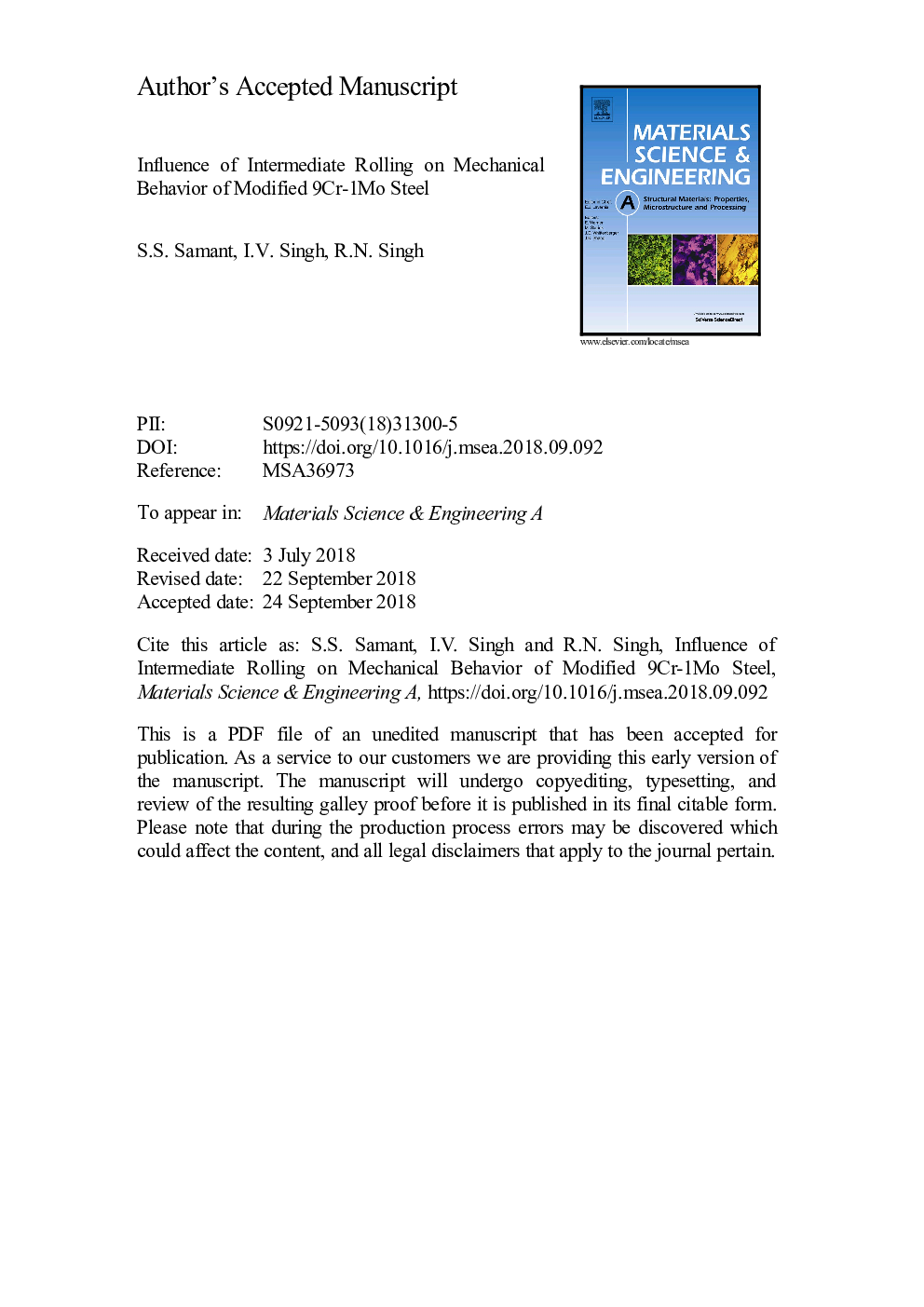| Article ID | Journal | Published Year | Pages | File Type |
|---|---|---|---|---|
| 11001640 | Materials Science and Engineering: A | 2018 | 43 Pages |
Abstract
In the present work, effect of normalizing (950-1050â¯Â°C) and tempering (650-700â¯Â°C) has been investigated to study the microstructure and mechanical properties of modified 9Cr-1Mo steel (G91) at room temperature (RT) and 650â¯Â°C. To improve the high temperature mechanical properties, hot rolling has been done at optimized normalizing and tempering conditions. Microstructural observations show that an increase in tempering temperature leads to decrease in mechanical strength both at RT and 650â¯Â°C due to the growth of M23C6 particles, formation of sub-grain boundaries and recovery. G91 steel rolled at 550â¯Â°C and tempered at 650â¯Â°C is found to have best combination of strength and fracture toughness at RT, which may be attributed to large number of small size of precipitates and increase in dislocation density. However, specimen normalized at 1050â¯Â°C and tempered at 650â¯Â°C shows more than 70% improvement in tensile strength at 650â¯Â°C as compared to as-received condition, which shows that G91 steel is more amenable to precipitation hardening. A typical type of tensile fracture with radial cracks and axial splitting is noticed at RT and ââ¯196â¯Â°C. The tendency and severity of such radial cracks and axial splitting are found to be affected by stress triaxiality and test temperature.
Keywords
Related Topics
Physical Sciences and Engineering
Materials Science
Materials Science (General)
Authors
S.S. Samant, I.V. Singh, R.N. Singh,
